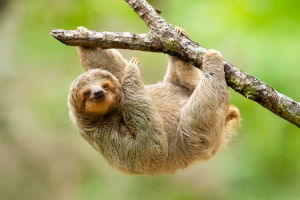Have you ever spotted a flash of red fur darting through the shadows of your neighborhood at night? That elusive figure is often the red fox, a cunning survivor that has mastered the art of living in cities.
As urban areas expand, red foxes have adapted in remarkable ways to thrive alongside humans. This article explores how red foxes use their natural skills and the cover of darkness to become true "night prowlers" in the cityscape.
Red Foxes: From Wilderness to Urban Jungle
Traditionally, red foxes inhabited forests, grasslands, and rural areas, relying on their keen senses and agility to hunt small prey. However, the rapid growth of cities has pushed many fox populations to adjust their lifestyles. Urban environments provide new opportunities—and challenges—forcing foxes to innovate their survival tactics.
Their ability to exploit city resources has turned them into adept urban hunters and scavengers.
Nighttime Advantage: Why Red Foxes Are Nocturnal in Cities
One of the key adaptations of urban red foxes is their primarily nocturnal behavior. The night offers safety from human activity, traffic, and other potential dangers. Darkness provides cover for stealthy movement, allowing foxes to scavenge without attracting attention.
By hunting and foraging after dusk, foxes avoid direct competition with diurnal predators and minimize confrontations with humans. This nocturnal shift is essential for their survival in busy urban settings.
Stealth and Agility: The Art of the Fox's Ambush
Red foxes are natural ambush predators. In the city, they apply these skills to navigate complex environments, slipping through backyards, parks, alleys, and even busy streets with remarkable agility. Their sharp hearing and vision help detect prey or food sources, while their soft paws allow silent steps.
Using these abilities, foxes can surprise small rodents, birds, and insects or locate human food waste with precision, effectively exploiting the urban food chain.
Urban Food Resources: A Bounty from Human Activity
Cities offer an abundant, though unpredictable, food supply for foxes. Discarded leftovers, garbage bins, pet food left outdoors, and even garden fruits become easy targets. Red foxes have learned to time their foraging trips to when humans are least active, such as late at night or early morning.
This reliance on anthropogenic food does not replace hunting but supplements their diet, making survival easier in an environment with limited natural prey.
Adaptation Strategies: Social Behavior and Territory in Cities
Urban foxes show flexible social behaviors compared to their rural counterparts. They often live in smaller family groups or even solitarily, adjusting territory sizes based on food availability. Some urban foxes become habituated to human presence, displaying less fear and sometimes approaching cautiously.
However, they still rely on stealth to avoid conflicts. Their territorial marking and communication skills help maintain boundaries, reducing competition among neighboring foxes in crowded urban spaces.
Human-Fox Interactions: Challenges and Coexistence
While many people appreciate the presence of urban foxes for their charm and ecological role, conflicts do arise. Foxes rummaging through garbage or taking small pets can cause concern. Understanding their behavior and ecological needs helps promote coexistence.
Simple measures like securing trash, avoiding feeding foxes directly, and maintaining green spaces support balanced relationships between humans and these clever mammals.
Scientific Insights: Studies on Urban Fox Survival
Research on urban fox populations has increased in recent years, revealing fascinating insights. Studies highlight how foxes modify their daily patterns, diet, and social structures to thrive in human-dominated landscapes.
Researchers use GPS tracking and camera traps to monitor movement and behavior, confirming the importance of nighttime activity and human food sources. These findings inform urban wildlife management strategies aimed at minimizing conflicts and preserving urban biodiversity.
Conclusion: The Red Fox, Master of Urban Survival
The red fox's ability to adapt, remain stealthy, and capitalize on urban resources has made it one of the most successful urban wildlife species. Their "night prowler" lifestyle showcases nature's resilience and adaptability.
Next time you spot a red fox slipping through the city shadows, remember you are witnessing an extraordinary example of wildlife thriving in the heart of human civilization. What do you think cities can do to better accommodate these fascinating creatures?


